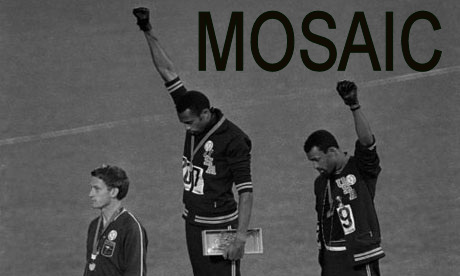
When Sam Rivers' Crystals was released in 1974, it had been over a decade since Ornette had worked with his Free Jazz Double Quartet, nine years since Coltrane assembled his Ascension band, and six since the first Jazz Composers' Orchestra Association was formed and whose first records were issued (a couple of members of that band also perform with Rivers here). It's difficult to note in the 21st century just how forward-thinking this avant-garde big band was, and how completely innovative Rivers' compositions are. The number of musicians on this session is staggering: With Rivers, it numbers 64 pieces! A few of the names appearing here are Hamiet Bluiett, Richard Davis, Bob Stewart, John Stubblefield, Bill Barron, Robin Kenyatta, Julius Watkins, Norman Connors, Andrew Cyrille, Billy Hart, Ahmed Abdullah, Charles Sullivan, Clifford Thornton, Grachan Moncur, Ronnie Boykins, and Reggie Workman -- and no pianist. Musically, this is the mature Sam Rivers speaking from the wide base of his knowledge as a composer, improviser, and conceptualist. These compositions were written between 1959 and 1972, and were finished as new elements came to him to fit them together conceptually. The fact that all six of them are so gorgeously juxtaposed is a testament to his discipline and his vision. From the beginning of "Exultation," the horns storm out of the gate, saxophones up front in what appears to be full free jazz freakout. Trumpets and trombones bleat behind, and the bass violins bow in unison on a modal opening. Within minutes, however, the rhythm section kicks in, and a full-on swinging soprano solo accompanied by the stomping bass of Workman fills the center for about 40 bars until the entire band comes back for a restated them that is knotty yet swinging. A number of instruments then jump through the center of the piece, creating an intervallic dialogue that prompts the soloists to come back in and take it. The intervals and contrapuntal structures are subtle enough to avoid seams -- though the jagged edges in the solos provide dense and beautiful textures -- and when the whole band comes back in, one doesn't notice that they are all grooving in a whole new rhythmic situation that is full of stops, starts, and sideways maneuvers. On "Tranquility," the bassist lays down a syncopated funk groove and long, drifting melodic lines that are written out comes flowing in between the bass and Stewart's tuba. They shimmer around each other in harmonic dissonance, though with the dynamics controlled, the edges are rounded. Rivers has written some of the most complex music of his life here, allowing for short, poignant, and often strictly composed solos to complement the linear, contrapuntal structures that these towering compositions are. As soloists do give way to one another, it is remarkable that the sheer density of hard swing provides the center of the maelstrom with such a wide emotional and chromatic palette. This is spiritual music in the most profound sense in that it attempts to breach the gyre between what has previously been said -- by Ellington, most notably -- what can be said, and the musically unspeakable. There is a massive centrifugal force at work in Rivers compositions here; and it pulls everything in, each dynamic stutter, legato phrase, ostinato whisper, and alteration in pitch in favor of what comes next. The swinging nature of these tunes refutes once and for all whether or not avant-garde music can be accessible -- -though it's true Sun Ra had already done that, but never to this extent. In sum, there are harsh moments here to be sure, but they are part of a greater and far more diverse musical universe, they are shards in the prism of the deep and burning soul that these six compositions offer so freely. Of the many recordings Rivers has done, this was the very first to showcase the full range of his many gifts. It is an underrated masterpiece and among the most rewarding and adventurous listening experiences in the history of jazz. Now that it is available on CD with pristine sound, you have no excuse. (Thom Jurek, All Music Guide)
1. Exultation
2. Tranquility
3. Postlude
4. Bursts
5. Orb
6. Earth Song
Personnel: Sam Rivers (arranger, conductor, soprano & tenor saxophones); Fred Kelly (soprano, alto & baritone saxophones, flute, piccolo); Joe Ferguson (soprano & alto saxophones, flute); Roland Alexander (soprano & tenor saxophones, flute, African flute); Paul Jeffrey (tenor saxophone, flute, bassett horn); Sinclair Acey, Ted Daniel, Richard Williams (trumpet, flugelhorn); Charles Majeed Greenlee, Charles Stephens (trombone); Joe Daley (euphonium, tuba); Gregory Maker (bass); Warren Smith (drums); Harold Smith (percussion).
Recorded at Generation Sound Studios, New York, New York on March 4, 1974.






































